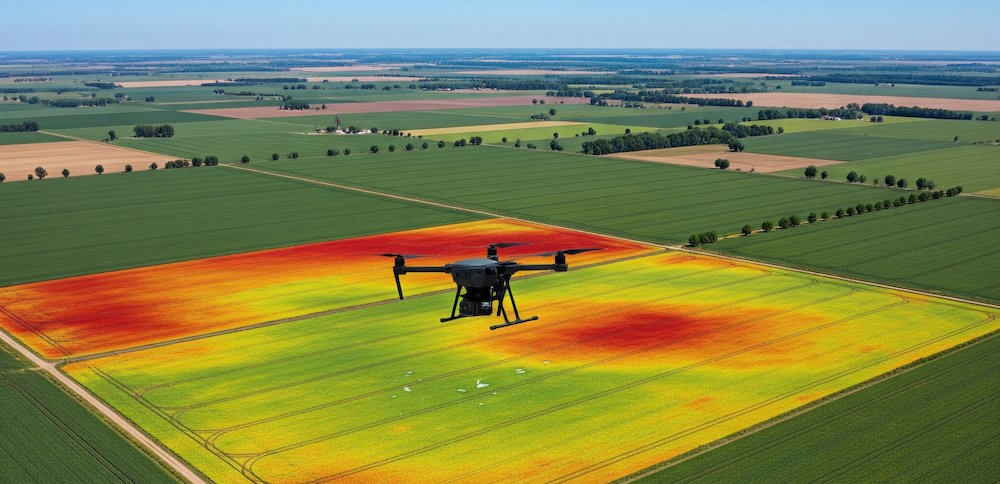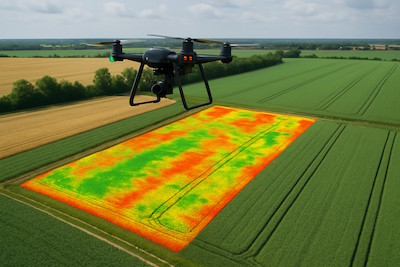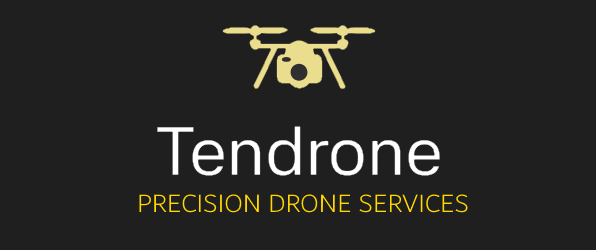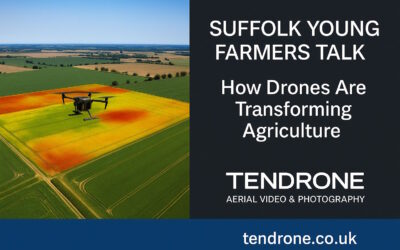
(Smarter farming with NDVI. Helping to cut costs, boost yields, and spot problems early)
What's up with all these drones?
In recent years, drones have become an increasingly common sight over the British countryside. They offer incredible potential in a range of industries, but not everyone using them is doing so responsibly. For farmers and rural landowners, this shift has brought both opportunity and frustration.
A recent article from Farmers Weekly highlighted the growing problem of unauthorised drone flights over farmland. Some individuals fly drones over private property without permission, breaching boundaries, invading privacy, and sometimes even recording footage without consent. These actions, while carried out by a minority, can cause real concern, especially when they are repeated or shared online without any explanation or accountability.
Understandably, this behaviour leads to distrust of drones more generally. For farmers dealing with tight schedules, livestock stress, or sensitive operations on their land, the sudden appearance of a buzzing machine in the sky can feel intrusive or even threatening. And while laws around drone usage are gradually catching up, enforcement can still be difficult.
A Misused Tool or a Missed Opportunity?
It’s important to separate rogue operators from the broader potential of drone technology. Used correctly, drones are not a nuisance, they are a powerful tool for modern farming. Across the UK and beyond, more and more farms are starting to see how aerial data can inform, support, and even transform day-to-day operations.
Some of the benefits drones can offer include:
1. Bird’s Eye Mapping for Better Planning
Aerial orthomosaics, or ortho maps, are detailed top-down images stitched together from many drone photos. These maps are ideal for:
-
Site planning and layout changes
-
Construction preparation
-
Monitoring the spread of vegetation or pests
-
Documenting field boundaries and crop rotation over time
The level of detail and accuracy makes them far more useful than a single satellite image or ground-level photo.

(Orthomosaic mapping for planning and construction)
2. Monitoring Crop Health with NDVI

(NDVI highlights stressed areas in crops for targeted action)
NDVI (Normalised Difference Vegetation Index) mapping is a method of analysing plant health by capturing different wavelengths of light. A drone fitted with the right sensor can fly over a field and produce a colour-coded map showing which areas are thriving and which may be under stress.
This gives farmers an early warning system, helping to:
-
Detect disease or pest problems before they spread
-
Target irrigation or fertiliser where it’s most needed
-
Improve yields while reducing waste
NDVI data doesn’t replace a walk in the field, it enhances it with a broader view.
3. Livestock Location and Welfare
In open pastures or large-scale grazing setups, drones can be a quick way to check on the position and condition of animals. This can be particularly useful:
-
After stormy weather
-
During lambing or calving seasons
-
When animals stray into neighbouring fields
Some farms use drones to monitor animals remotely without disturbing them, which is a bonus in sensitive situations.
4. Assessing Damage and Risk
From storm damage to flooded ground or fallen trees, a drone can safely access areas that might otherwise be difficult to reach. A quick flyover provides images or video that can:
-
Support insurance claims
-
Guide maintenance teams
-
Help plan fencing or drainage repairs
5. General Oversight and Time Saving
For larger farms or those with multiple blocks of land, drones provide a fast way to visually inspect areas without travelling by foot or vehicle. They’re ideal for spot checks, visual records, and keeping a digital history of the land over time.
So Where Does a Drone Company Fit In?
While hobbyist drones can be bought almost anywhere, commercial drone operations follow strict rules. Certified drone pilots must register with the CAA, pass a theory test, follow safety protocols, and have insurance in place. Professional operators also know where they can and can’t fly and will always obtain permission before taking off over private land.
That’s where a responsible drone company can offer real value.
At Tendrone, we’re based in Essex and work closely with local farmers and landowners. We’re fully insured, trained, and committed to safe and respectful operations. We always plan flights in consultation with you and focus on the areas that bring you real insight or benefit.
We’ve recently launched a dedicated NDVI mapping service, designed specifically for farms across Essex. Whether you’re running arable, mixed, or specialist operations, we can help you capture valuable aerial data to support your decision-making.
We don’t fly unless we’re invited. And we don’t offer services unless they genuinely help.

Want to Know More?
If you’re curious about NDVI mapping, drone-based orthomosaic imagery, or aerial inspections tailored to your land, we’re happy to have a chat. No pressure, no obligation.


0 Comments